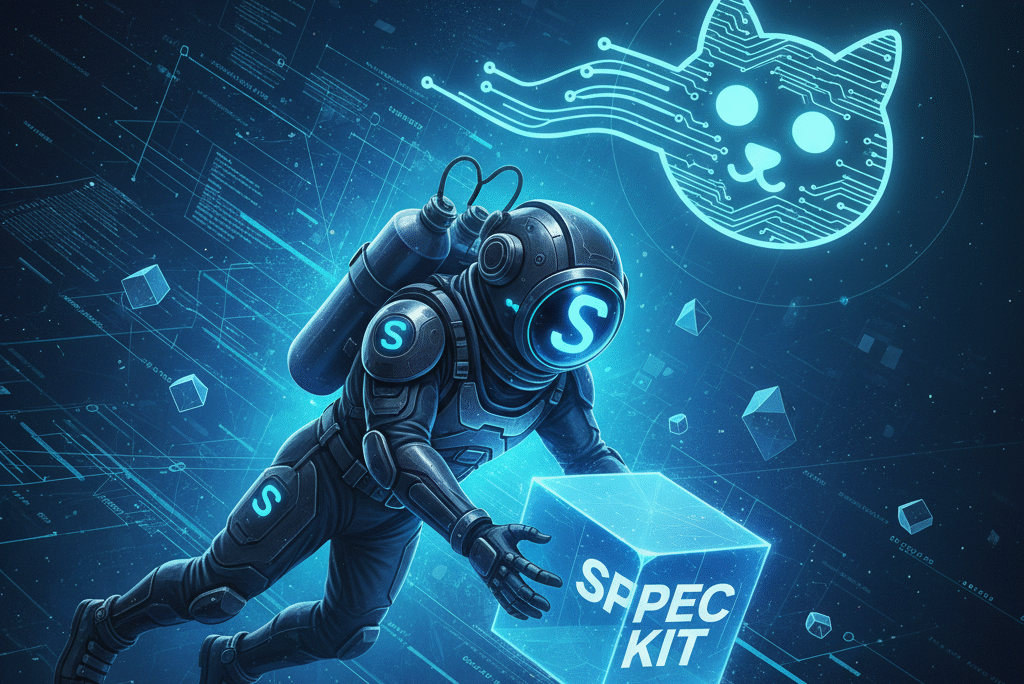In the fast-paced world of software development, clarity and precision are not just buzzwords – they are the bedrock of success. How many times have you been part of a project where requirements shifted, features were misunderstood, or a beautiful piece of code simply didn’t meet the stakeholder’s initial vision? It’s a common scenario, leading to frustrating rework, missed deadlines, and strained team dynamics.
What if there was a way to bake clarity into your development process from the very beginning, ensuring everyone – from product owners to developers and QAs – is perfectly aligned on what needs to be built, and why? Enter Spec-Driven Development (SDD), a powerful methodology designed to bring laser focus to your projects. And what if you could integrate this precision directly into your existing GitHub workflow, leveraging the tools your team already loves? That’s where the GitHub Spec Kit comes into play.
What is Spec-Driven Development (SDD)?
Spec-Driven Development isn’t just another agile buzzphrase; it’s a foundational shift in how teams approach building software. At its core, SDD is about defining the ‘what’ and ‘why’ of a feature or system before you dive into the ‘how’. Instead of writing code and then figuring out if it matches a vague idea, SDD insists on detailed, unambiguous specifications that serve as the single source of truth for the entire project lifecycle.
Think of it as architectural blueprints for your software. Before a single brick is laid, an architect designs every detail, from the structural integrity to the aesthetic finishes. Similarly, in SDD, specifications document user stories, acceptance criteria, edge cases, and expected behaviors in a clear, executable, and testable format. These specs become the contract between all parties involved, drastically reducing misinterpretation and ensuring that the final product not only functions correctly but also delivers the intended business value.
The Challenge: Why SDD is More Crucial Than Ever
Modern software development is complex. Teams are often distributed, projects involve multiple stakeholders, and business requirements can evolve rapidly. Without a robust framework for managing these complexities, projects often fall victim to:
- Scope Creep: Features are added ad-hoc without proper vetting, inflating project size and timelines.
- Miscommunication: What a product manager describes, a designer envisions, and a developer implements can be three different things.
- Rework and Technical Debt: Fixing misinterpreted requirements post-development is costly and time-consuming, piling up technical debt.
- Quality Issues: Ambiguous requirements make it difficult to write comprehensive tests, leading to bugs and an unstable product.
SDD directly addresses these challenges by fostering a culture of clarity and collaboration. By formalizing specifications early, teams can identify potential issues, clarify assumptions, and gain a shared understanding before significant development effort is expended. This proactive approach saves time, money, and headaches down the line.
Introducing GitHub Spec Kit: Your SDD Accelerator
While the concept of spec-driven development is powerful, its practical implementation often requires tools that seamlessly integrate into existing workflows. This is precisely where the GitHub Spec Kit shines. The Spec Kit is not a monolithic framework but rather a collection of best practices and potentially open-source tools (or a conceptual framework that guides tool usage) designed to bring the rigor of SDD directly into your GitHub repositories.
It leverages GitHub’s familiar environment – Markdown files, pull requests, issues, and project boards – to create a living documentation system for your specifications. Imagine defining your user stories and acceptance criteria as version-controlled Markdown files right alongside your code. These aren’t just static documents; they become an integral part of your development lifecycle, reviewed, updated, and referenced at every stage.
Key Benefits of Integrating Spec Kit into Your Workflow
Adopting GitHub Spec Kit isn’t just about adding another tool; it’s about fundamentally improving how your team collaborates and delivers. Here’s how:
1. A Unified, Living Source of Truth
By keeping specs in Markdown files within your GitHub repository, they live where the code lives. This means specs are version-controlled, easily searchable, and always up-to-date with the latest changes. No more hunting for outdated documents in external systems or confusing wikis.
2. Enhanced Collaboration and Transparency
The Spec Kit encourages collaboration from the outset. Product owners, designers, developers, and QA engineers can all contribute to, review, and comment on specifications through GitHub’s familiar pull request process. This ensures everyone has a voice and a shared understanding before development begins, fostering a truly cross-functional team.
3. Improved Code Quality and Testability
When specifications are clear and detailed, writing code that meets those requirements becomes much easier. Furthermore, well-defined acceptance criteria within your specs serve as an excellent foundation for writing robust automated tests. The specs essentially become your test cases, making it straightforward to validate functionality and catch regressions.
4. Reduced Rework and Faster Time to Market
By catching ambiguities and design flaws early in the specification phase, teams drastically reduce the need for costly rework later. This streamlined process leads to fewer bugs, faster development cycles, and quicker delivery of valuable features to your users.
5. Seamless Integration with Existing GitHub Workflows
The beauty of GitHub Spec Kit is its natural fit. It doesn’t require learning an entirely new platform. Instead, it leverages GitHub’s existing features – issues for tracking tasks, pull requests for review, and Markdown for documentation – making adoption smoother for teams already comfortable with the GitHub ecosystem.
Getting Started with GitHub Spec Kit: A Practical Path
While “Spec Kit” itself might be a conceptual framework or a collection of tools rather than a single installable product, its implementation is straightforward:
- Define Your Spec Structure: Decide on a consistent format for your specifications. Many teams adopt Gherkin-like syntax (Given-When-Then) within Markdown files for clarity, especially for user stories and acceptance criteria.
- Create a Dedicated Specs Directory: Establish a `specs/` or `documentation/` directory within your GitHub repository to house all your specification files. This keeps them organized and easily discoverable.
- Link Specs to Issues and Pull Requests: When starting a new feature, create a GitHub Issue that references the relevant spec file. As development progresses, link your Pull Requests directly to these issues and specs, ensuring that code changes are always traceable back to the agreed-upon requirements.
- Integrate into Your CI/CD: Consider adding checks to your CI/CD pipeline to ensure that new code changes have corresponding updated or reviewed specifications. This reinforces the “spec-first” mindset.
- Foster a Culture of Review: Encourage all stakeholders to actively participate in reviewing spec files via pull requests before any code is written. This pre-code review is invaluable.
Why Your Team Needs This Shift
Adopting Spec-Driven Development with the practical integration offered by GitHub Spec Kit isn’t just a methodological choice; it’s a strategic investment in your team’s efficiency, product quality, and overall success. It empowers developers with clear goals, provides product owners with verifiable outcomes, and ensures QA engineers have precise criteria for testing. This leads to happier teams, more robust software, and ultimately, more satisfied users.
Ready to Build with Unprecedented Clarity?
Stop guessing and start specifying. By embracing Spec-Driven Development and integrating it seamlessly into your GitHub workflow with the principles of GitHub Spec Kit, you’re setting your team up for a new level of precision and collaboration. It’s time to build smarter, not just faster.
Ready to transform your development process and deliver software with unparalleled confidence? Explore the possibilities of GitHub Spec Kit and bring clarity to your next project today! Start by defining your first spec in Markdown within your project’s GitHub repository and invite your team to review.





